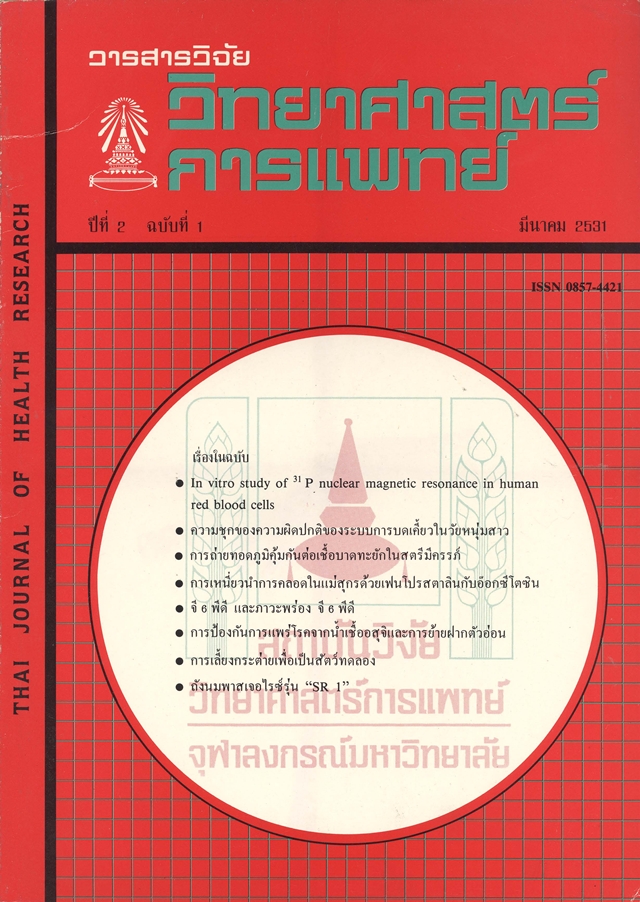In vitro study of 31P nuclear magnetic resonance in human red blood cells
Keywords:
-Abstract
Phosphorus metabolites in human red blood cells were studied by a nuclear magnetic resonance spectrometer, JEOL FX 90Q, operating at 36.2 MHz. 31P resonance signals of 2, 3- diphosPhoglycerate (DPG) and inorganic orthophosphate (Pi) were recorded in hemolysates and intact erythrocytes. However, the Pi peak was absent in the intact red blood cells, detecting for 4 hours (2,500 pulses). The chemical shift values (in ppm) of these biological phosphate compounds appearing in the spectrum were pH dependent.
Downloads
Published
2019-05-27
How to Cite
Chinayon, S., Jinsart, W., Eiam-ong, S., Suvanpha, R., & Pansin, P. (2019). In vitro study of 31P nuclear magnetic resonance in human red blood cells. Journal of Health Research, 2(1), 1–8. retrieved from https://he01.tci-thaijo.org/index.php/jhealthres/article/view/191187
Issue
Section
ORIGINAL RESEARCH ARTICLE







